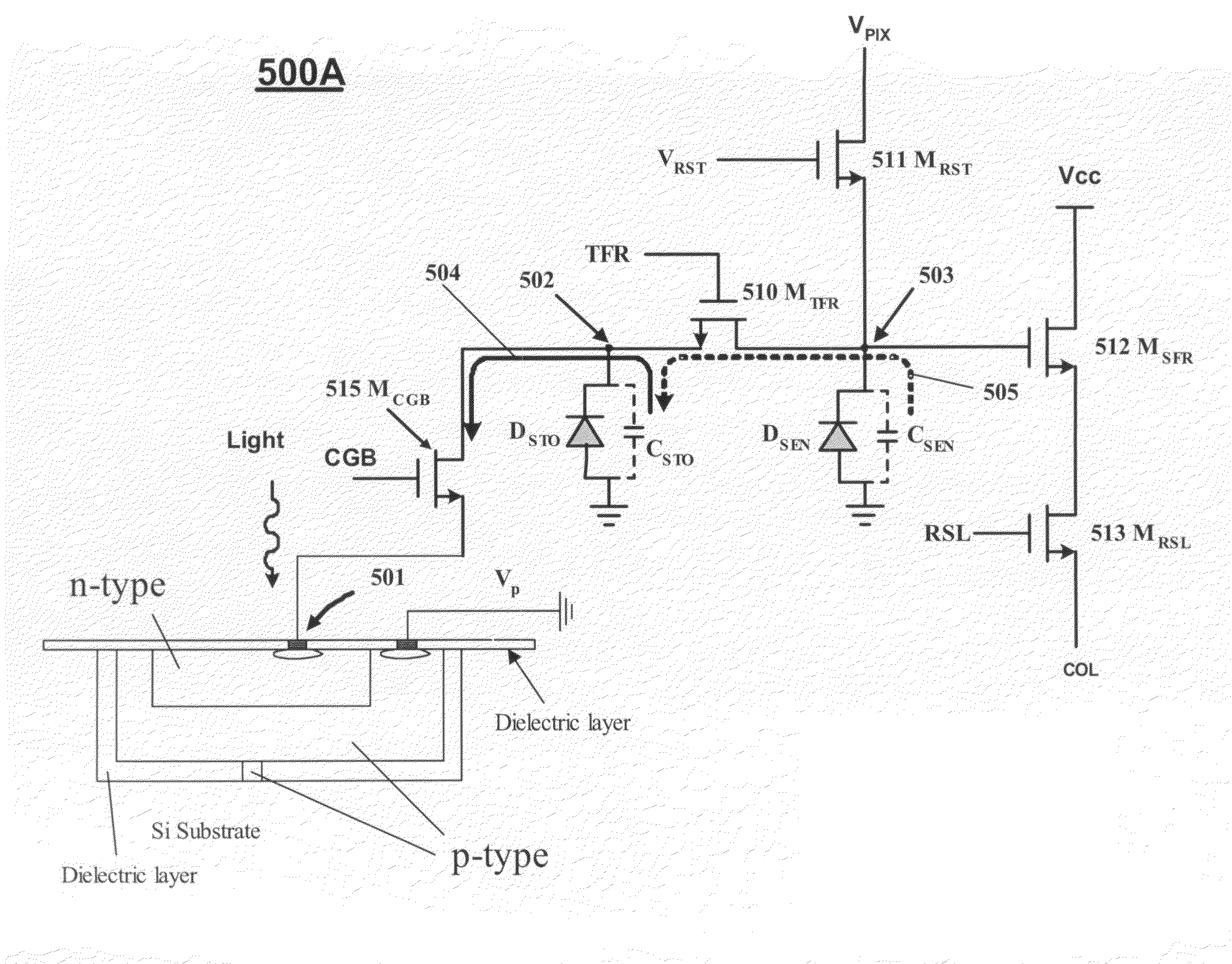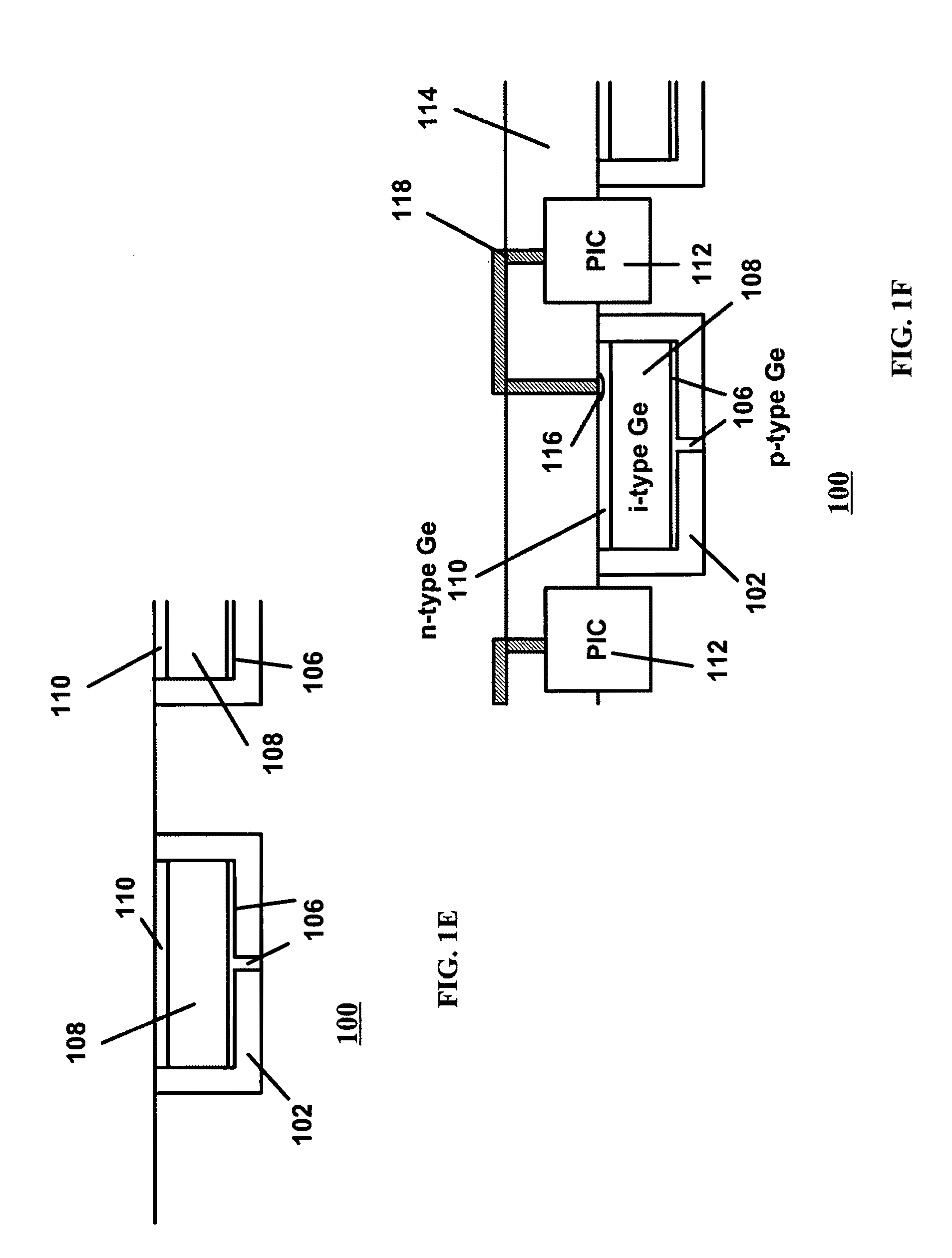Hybrid imaging sensor with approximately equal potential photodiodes
a photodiode and hybrid imaging technology, applied in the field of hybrid imaging sensors, can solve the problems of inability to achieve perfect travel paths in real practice, inability to fabricate perfect travel paths, and inability to accurately predict the charge transfer of photodiodes, etc., to achieve the effect of reducing or eliminating dark curren
- Summary
- Abstract
- Description
- Claims
- Application Information
AI Technical Summary
Benefits of technology
Problems solved by technology
Method used
Image
Examples
Embodiment Construction
Photo-Sensing Element Islands Array on Silicon Substrates
[0049]Preferred embodiments of the present invention may be described by reference to the drawings. FIGS. 1A through 1F describe a first preferred method for creating an array of germanium-based photodiodes islands in a silicon substrate. This method results in vertical p-i-n photodiodes. FIGS. 2A through 2F describe a second preferred method of creating an array of germanium-based photodiodes islands in a silicon substrate. This second method results in horizontal p-i-n photodiodes. FIGS. 3A through 3F describe a third preferred method of creating an array of germanium-based photodiodes islands in a silicon substrate. This third method results in p-n junction photodiodes.
[0050]The silicon substrate material used in the methods described below is typical silicon substrate material used in semiconductor industry; could be either a p-type silicon substrate alone or a p-type epitaxial layer of about 4-6 micron thick on top of a p...
PUM
 Login to View More
Login to View More Abstract
Description
Claims
Application Information
 Login to View More
Login to View More - R&D
- Intellectual Property
- Life Sciences
- Materials
- Tech Scout
- Unparalleled Data Quality
- Higher Quality Content
- 60% Fewer Hallucinations
Browse by: Latest US Patents, China's latest patents, Technical Efficacy Thesaurus, Application Domain, Technology Topic, Popular Technical Reports.
© 2025 PatSnap. All rights reserved.Legal|Privacy policy|Modern Slavery Act Transparency Statement|Sitemap|About US| Contact US: help@patsnap.com



